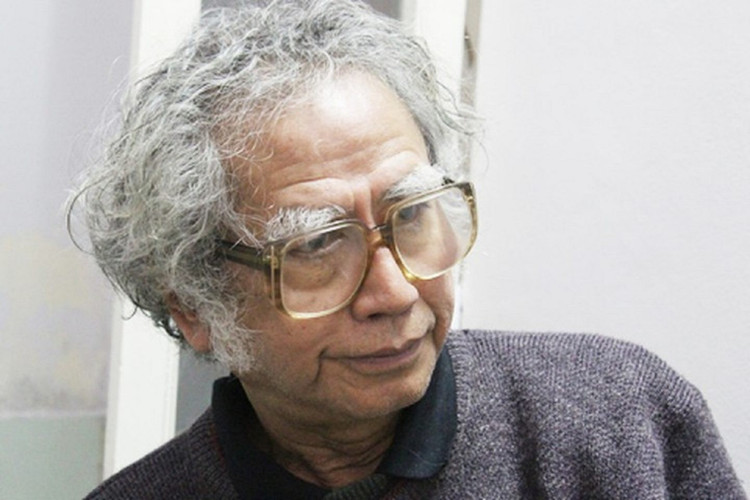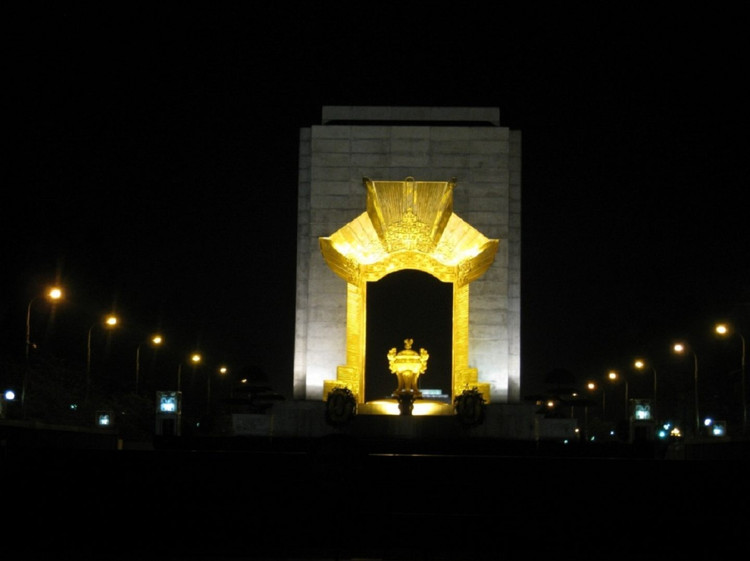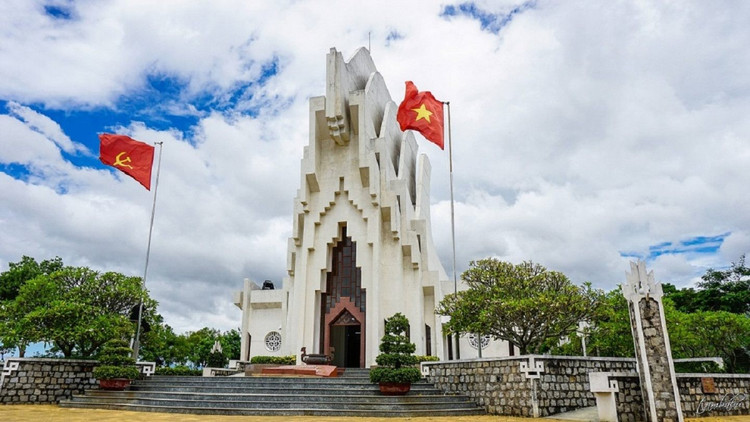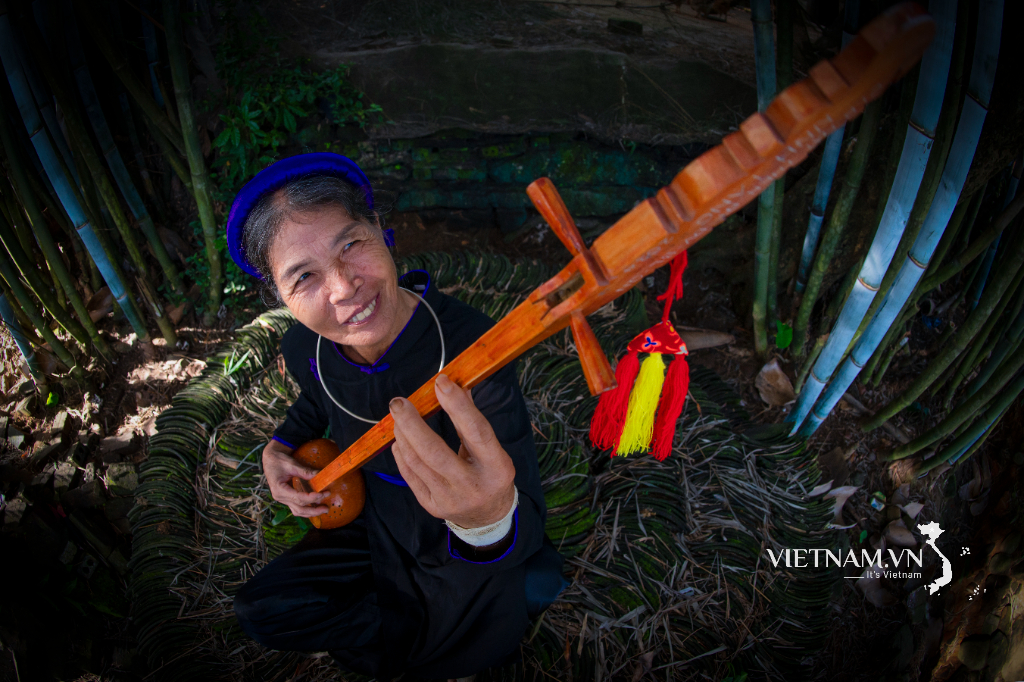Architect Le Dinh Hiep, author of the Bac Son Martyrs Memorial and many works bearing the imprint of Vietnamese philosophy, breathed his last at 8:55 p.m. on October 4 at the Vietnam-Soviet Friendship Hospital ( Hanoi ), at the age of 84. His passing left a great sorrow in the architectural community and those who love simple beauty imbued with national spirit.

“Empty Temple”, the architectural philosophy that created the Bac Son masterpiece
Construction began on April 7, 1993 and was inaugurated on May 7, 1994, on the occasion of the 40th anniversary of the Dien Bien Phu victory, Bac Son Memorial is a project that marked the name of architect Le Hiep.
In the center of Ba Dinh Square, where the sacred symbols of the country converge, the structure is only 12.6 meters high, located within an area of 12,000 square meters. Reinforced concrete structure, ivory-white marble exterior, the entire statue is like a large candle lighting up the Hanoi sky, simple yet solemn.

What makes the project special is the philosophy that architect Le Hiep conveyed. He just wanted to create a temple for martyrs. The generals are worshiped in the temple, and the people and living beings are worshiped in the shrine. Something very rustic but concise.
This temple was not built, but hollowed out, creating a space for remembrance. Flowers, leaves, grass, clouds, incense... are the materials Vietnamese people use to remember the deceased.
This “hole-cutting” transforms the mass of matter into a spiritual void, where visitors not only see but also feel the presence of spirits. It is a sacred thing created not by proportions or materials, but by emotions and philosophy.
Architect Le Hiep said that in 1992, while working with some students, a sculptor asked him to support the architectural part of the Bac Son Martyrs Memorial competition. After helping, he spontaneously sketched his own idea, a solid cube with the negative image of a temple inside. The students praised it and encouraged him to participate in the competition. Even though the registration deadline had passed, he still called the principal of the Hanoi University of Architecture to ask for more places to participate, and thanks to the school's approval, the project was accepted on the submission date.
My design meets two main requirements: to commemorate the martyrs’ souls – expressed through the hollow temple block, the “emptiness” that cannot be seen but can be felt; and to look towards the future, symbolized by the second level, the “incompleteness” to continue moving forward. The gilded bevel with spreading rays of light both suggests the development of the earthly world and is the place where the soul returns.
“When considering the surrounding architectural space, the project also shows integration with moderate volume and responsive form to Uncle Ho's Mausoleum,” he shared.
In the initial design competition, his plan only won second prize, but when Prime Minister Vo Van Kiet saw the exhibition, he chose this plan for construction. This became the turning point, making Taipei Mountain a national memorial symbol.
Architect Phan Dang Son, Chairman of the Vietnam Association of Architects, assessed that the Bac Son Memorial is the pinnacle of architect Le Hiep's work. Over the past 30 years, this architectural image has maintained its modernity and strong national identity, where Vietnamese people see the image of their homeland, country, and gratitude to their ancestors.
Architect Le Hiep's journey of "decoding" shapes
Architect Le Hiep's real name is Le Dinh Hiep, born in 1942 in Thanh Hoa. He studied architecture at Hanoi University of Architecture, class II (graduated in 1966), then was retained as a lecturer.
During the period 1977-1983, he was transferred to the Military Technical University to teach architecture courses K12 and K13. Then, from 1989-1990, he joined the Monument Restoration Center, in charge of interior construction of the Ho Chi Minh Museum.
Throughout his career, he not only taught but also took on the task of designing monuments, memorials and memorial works in all provinces and cities: After Bac Son, Architect Le Hiep continued to make his mark with a series of works of cultural significance: Tuyen Quang Provincial Memorial and Museum, Mong Cai Martyrs Cemetery (Quang Ninh), Nhan Mountain Memorial (Phu Yen), Bac Ninh Martyrs Memorial, Uncle Ho Temple in Pac Bo (Cao Bang), Prime Minister Vo Van Kiet Memorial Area (Vinh Long)...
Architects highly appreciate his “conceptual decoding” thinking, transforming philosophy into shapes, and folk culture into modern architectural language. Each monument, to him, is a sacred realm created from life, where people who come to pay their respects can touch the memories and spirit of the nation.
Many of his works do not have clear character images, but use abstract architectural methods, "decoding concepts" to evoke memories, a style that has become his trademark.

For example, in the Song of the Swallow Mountain, he used the image of a swallow flying from the mountain, facing the Northeast to symbolize the continuation of generations. In the Song of the Bac Ninh Province, he used the image of a pen and inkstone, and a blooming lotus, evoking the characteristics of Kinh Bac.
He was awarded the State Prize for Literature and Arts in 2001 and many National Architecture Awards in 1996, 1998, 2008, 2012, 2014.
Memorial design to create a shelter for the "elite"
In his exchanges with the press and students, Architect Le Hiep repeatedly emphasized: he is not looking for architecturalism, but rather for folk, for contact with real life. He once said:
“I don’t look for isms. I aim for folklore.” For him, memorial architecture is “a shelter for the elite,” a space that is both gentle and sacred, without the need for clear images:
“In the Tale of Kieu, there is a saying: “The body dies, but the spirit remains.” I think that designing a memorial means creating a place for the “spirit” that Nguyen Du mentioned. The language for the deceased should be both real and unreal, not a person, not a thing, not an animal, but something,” he shared.
According to him, each land has its own unique cultural mark and the person who creates the project must respect and understand that locality. When designing the monument in Binh Dinh province, he refused the "lower" position because he believed that making a monument to martyrs cannot be done arbitrarily.
Regarding passing on his profession to the younger generation, he humbly said that his views may not be in line with current trends, but his advice to architecture students is still clear: forget about conceptual trends, current life already has those things.
As for the public, he once shared that Taipei Mountain was the "hardest work" he had ever done, because the techniques, ideas, and details were all new.
These views show an architect who does not seek ostentation, but chooses sacred and emotional qualities to touch the viewer's mind from space, light, shade, to the silence between incense-filled nights.
The funeral of architect Le Dinh Hiep will be held from 7:30 a.m. on October 9 at Funeral Home No. 5 Tran Thanh Tong, Hanoi.
Source: https://khoahocdoisong.vn/kien-truc-su-le-hiep-chuyen-chua-ke-phia-sau-kiet-tac-bac-son-post2149058799.html



![[Photo] Prime Minister Pham Minh Chinh chairs the 16th meeting of the National Steering Committee on combating illegal fishing.](https://vphoto.vietnam.vn/thumb/1200x675/vietnam/resource/IMAGE/2025/10/07/1759848378556_dsc-9253-jpg.webp)






















![[Photo] Super harvest moon shines brightly on Mid-Autumn Festival night around the world](https://vphoto.vietnam.vn/thumb/1200x675/vietnam/resource/IMAGE/2025/10/07/1759816565798_1759814567021-jpg.webp)






































































Comment (0)